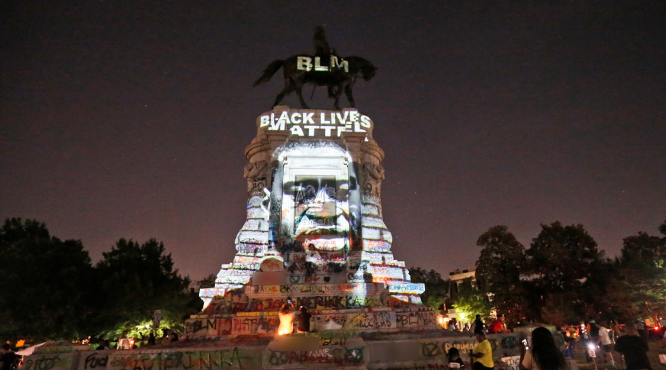Ava DuVernay’s documentary 13th delves into the issue of mass incarceration of African-Americans, spanning from the enactment of the 13th Amendment to the United States Constitution in 1865 to the early 21st century. DuVernay argues that despite the abolition of slavery with the 13th Amendment, a new form of oppression emerged through the criminalization of behaviour, particularly targeting African-Americans. (Vicente, 2021)
“The United States did not just criminalise a select group of black people. It criminalised black people as a whole, a process that, in addition to destroying untold lives, effectively transferred the guilt of slavery from the people who perpetuated it to the very people who suffered through it.”
Manohla Dargis
One of the ways that the documentary is so powerful is through the fostering of narrative and visual components that evokes strong emotions within the viewer, mainly through the use of archival footage of police brutality cases. This can be linked to the Black Lives Matter movement, where the same technique was employed throughout the media to help raise awareness.
The hashtag #BlackLivesMatters gained widespread attention on various social media platforms in 2013 after George Zimmerman was acquitted for the death of Trayvon Martin, however it only became significant after the protests in Ferguson, following the fatal shooting of Micheal Brown Jr. at the hands of the police. During the COVID-19 pandemic, this social injustice persisted, the virus especially affecting minority groups due to occupying a large quantity of working class jobs that exposed them and limited health care. (Olson, 2021) Nevertheless, this led to the increase of media activism to help mobilise the fight for equality which contributed both positively and negatively.

One positive impact is increased participation in offline activism that serves as a public forum for sharing personal narratives and viewpoints and fostering connections with like-minded individuals facing similar challenges. It builds a community where all the unheard voices come together as one, an impactful example being the widespread circulation of George Floyd’s murder video that gained a lot of attention for the support of BLM. This led to individuals projecting his face on the renown Confederate monument of Robert E. Lee where a lot of people gathered to show their support. “There’s just a feeling of community and family. All around the circle, you have all different people coming around and doing different things. It’s really inspiring,” said Joseph Rogers, an organiser of this initiative. (Colarossi, 2020)
Other ways social media benefited the Black Lives Matter movement was that many individuals utilised their Instagram pages extensively to organise protests, rallies, funding pages for donations, singing petitions, etc. They invited users to participate by posting schedules and locations of upcoming events, sharing photos and videos from them. An online protest related to the aforementioned was the trial to convict Derek Chauvin, the police officer that murdered George Floyd. Accounts were set up with the slogan “Defund the Police”, giving updates on the trials, memorial campaigns for loved ones, and calls for criminal justice amendment against police brutality. (Olson, 2021)

Figures 2&3: Anonymous Instagram posts. April 2021.

On the other hand, there are also downsides to social media activism as well. One such being the ease with which individuals can sit behind their screens and pat themselves on the back for engaging in online activism without being willing to take the necessary steps to further support the cause. Bradley Allsop calls this “slacktivism”. However, a bigger concern is partisan media. A correlation exists between increased consumption of conservative media outlets, like Fox News, and negative attitudes toward the BLM movement which influenced audience perceptions, promoting negative stereotypes towards racial minorities The publisher’s political orientation is frequently reflected, building a viewership by providing material that speaks to the particular values and preferences of their target audiences to improve profitability. (Kim, 2024) Due to this, it’s always important to stay informed towards the fabrication of media and its methods of manipulating the viewer.
Cited Sources:
Colarossi, Natalie. “Photos Show How the Robert E. Lee Statue in Virginia Has Been Reclaimed to Support the Black Lives Matter Movement.” Business Insider, www.businessinsider.com/robert-e-lee-statue-repurposed-black-lives-matter-images-2020-7.
Kim, Sei-Hill, et al. “Black Lives Matter and Partisan Media.” Journalism and Media, vol. 5, no. 1, 1 Mar. 2024, pp. 78–91, http://www.mdpi.com/2673-5172/5/1/6, https://doi.org/10.3390/journalmedia5010006.
Olson, Reilly E., “Roles of Social Media in the Black Lives Matter Movement During COVID-19”. 2021 https://scholarworks.gvsu.edu/honorsprojects/838
Vicente, Maria Eduarda Gil. “Black Dissent in America: Exploring Ava DuVernay Selma and 13th against the Background of the 2020 Anti-Racial Discrimination Protests.” Biblos, no. 7, 12 July 2021, pp. 95–115, https://doi.org/10.14195/0870-4112_3-7_5.
Leave a comment